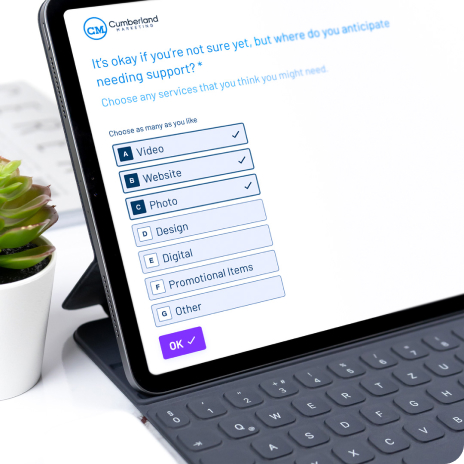Did you know that nearly 94% of first impressions relate to your site’s web design?
When it comes to your dental website, patients' first impressions come from your site’s design. Having a poor dental web design can turn your customers away. This is why it’s important to have a well-designed website.
A good dental web design can help you stand out in a competitive market. Below is a comprehensive guide that explores the best dental web design trends.
Responsive and Mobile-Friendly Design
Patients are increasingly relying on their smartphones to find nearby dental practices. With the surge of mobile device usage for online searches, your dental practice needs to have a mobile-first design.
A mobile-friendly website can help caters to the needs of on-the-go patients who seek convenience. To optimize your dental website for mobile devices, use responsive layouts that adjust to fit different screen sizes. This ensures that your website is navigable, regardless of the device being used.
Additionally, you can implement touch-friendly interfaces, such as larger buttons and simplified menus. This can help enhance user interaction on touchscreens, facilitating seamless browsing experiences.
Minimalistic and Clean Layouts
Dental patients often feel overwhelmed due to their crowded schedules. Navigating cluttered dental websites only adds to the burden. If your web design is full of visual noise, your patients may find it hard to get relevant information fast.
Busy layouts with excessive elements can also confuse and frustrate visitors. Luckily, the trend of minimalistic and clean layouts in dental web design can be a solution.
Minimalistic and clean layouts strip away unnecessary elements and focus on simplicity. These designs focus on clean lines, ample white space, and a minimal color palette. As a result, it creates an attractive and uncluttered aesthetic.
With minimal distractions, your patients can easily find and consume your content. This can increase engagement. Minimalistic dental web design ideas also allow for faster loading times.
When incorporating minimalistic design into your dental website, consider using ample white space. It helps provide breathing room for your content.
Use simple and intuitive navigation menus to ensure effortless exploration. Additionally, opt for clear and legible typography to enhance readability.
Write Patient-Centric Content
It can be hard to find relevant and relatable information in a sea of generic dental content. When your site's content doesn't focus on patients' needs, they may feel disconnected.
Dental websites filled with technical jargon can also be intimidating to visitors. This lack of patient-centricity hampers their ability to connect with your practice. As a result, they may turn away.
This is why you need to adopt a patient-centric approach to web design. Place the patient at the center of the online experience by creating customized content.
Patient-centric content focuses on addressing the needs, concerns, and questions that patients have. It also uses clear, friendly, and relatable language, making dental information more accessible.
Tailored content also acknowledges the emotional aspect of dental visits. You can use it to address common anxieties and provide reassurance. It also highlights the patient experience, emphasizing comfort, compassion, and personalized care.
Engaging Visual Content
Clients often seek a visual representation of what they can expect from the dental practice. If your web design has static and text-heavy websites, it may fail to capture their attention. Text-heavy websites also fail to engage clients on an emotional level.
However, the solution lies in the incorporation of captivating visual content in your dental web design. High-quality images and videos can help convey the professionalism of your dental practice.
When you showcase state-of-the-art equipment dental office, you can instill confidence in visitors. This them more likely to choose your services.
Authenticity and personalization are vital when using visual content for dental websites. Ensure you use real photos of your team and office. This helps foster a sense of trust and connection with your patients.
Another powerful visual element is showcasing before and after photos of dental treatments. These images help show the transformative power of your dental services.
These visual elements also serve as compelling evidence of your expertise. Your patients can envision themselves with a healthy smile, driving them to take action.
When incorporating visual content, ensure they’re high quality and well-optimized. If you use visual content, keep them short—around 60-90 seconds. Also, use an appropriate balance of visuals and text. This allows the images to enhance your brand message.
Intuitive Navigation and Information Architecture
Complex navigation menus and slow loading times can be frustrating for your patients. This can deter them from exploring further, leading to high bounce rates.
Intuitive navigation is crucial in dental web designs. It ensures that visitors can find the information they need. A well-designed navigation menu enables your patients to explore your website with ease. This improves their experience, reducing the likelihood of bouncing.
To create user-friendly navigation menus, focus on simplicity and clarity. Limit the number of menu items and use descriptive labels that convey the content of each section.
Information architecture is also ideal for dental websites. Ensure you organize and structure content in a logical and user-friendly manner.
Design a clear hierarchy of pages and organize information into categories. This allows your patients to find relevant content fast.
Logical page hierarchies can help you organize your content effectively. Arrange pages in a hierarchical structure—from broad categories to more specific subcategories. This helps users navigate through your website intuitively.
Integration of Live Chat and Chatbots
Dental patients often have questions or concerns that need timely responses. Traditional methods such as phone calls may have delays or limited availability. This can leave potential patients feeling frustrated or uncertain.
Live chat and chatbots can help bridge this gap. They offer real-time support and immediate answers. This provides an efficient channel for patient engagement.
Chatbots offer automated help around the clock. They can provide quick answers to FAQs and offer appointment scheduling options.
These web design features help reduce wait times. They also cater to the needs of tech-savvy patients who prefer self-service options.
Live chat functionality offers patients the convenience of instant communication and personalized support. It allows potential patients to ask questions and seek clarification without the need for phone calls or emails. Prompt responses foster trust and increase the chances of converting visitors into patients.
To incorporate these features, consider placing prominent chat buttons in strategic locations. Ensure that the chat interface is user-friendly and visually appealing.
When you embrace live chat and chatbots, your dental clinic can provide superior customer support. The convenience and immediacy of these features can boost conversion rates. This results in a more engaged and satisfied patient base.
ADA Compliance and Accessibility
When your dental website fails to focus on ADA compliance and accessibility, it can limit access for some of your patients. These features ensure equal access and usability for people living with disabilities.
Apart from moral inclusivity, there are legal obligations surrounding web accessibility. The Americans with Disabilities Act (ADA) mandates that dental clinics ensure equal access to services.
Non-compliance with ADA regulations can result in legal consequences. What's more, it can lead to reputational damage to your clinic. For optimal ADA compliance and accessibility, dental websites should implement features such as:
- Alternative text for images
- Captions for videos
- Keyboard navigation
- Clear and consistent website structure
- Adjustable text sizes
- Color contrast options
- Compatibility with screen readers
To analyze your website for compliance with WCAG standards, use tools such as accessibility checkers. Ensure you collaborate with dental web designers to create an inclusive site.
SEO Optimization
In the vast digital landscape, having a dental website is not enough. There are a lot of dental clinics online. As a result, it can be hard for patients to find dental websites that align with their needs and preferences.
With countless dental practices vying for attention online, it can be challenging for you to stand out. This is where the power of search engine optimization (SEO) comes into play.
When you implement SEO in your dental web design, you can improve your website’s ranking. As a result, you can increase visibility in search engine results.
To start, identify relevant keywords that your patients are likely to use when looking for dental services. Ensure you place these keywords strategically throughout your website's content.
Besides keyword optimization, create informative and keyword-rich blog posts. When you offer content that educates patients, you can position your website as a reputable resource in the dental industry. This can positively impact your search engine rankings.
Additionally, optimize your website's loading speed and build high-quality backlinks.
Online Reviews and Testimonials
When it comes to making decisions about their oral health, patients have a problem finding a dental practice they can trust. With so many options available, it can be hard for patients to determine which clinic will provide high-quality care.
Your patients desire assurance that they are making the right choice for their dental care. This is why they seek validation from others who have had firsthand experiences with your practice.
To capture their attention, ensure you feature genuine patient testimonials on your website. Testimonials provide social proof, showing the positive experiences of previous patients. They serve as powerful endorsements, influencing potential patients' decision-making process.
Since 15% of users don’t trust businesses that don’t have reviews, your dental web design shouldn’t miss them. Encourage your patients to leave online reviews and ratings. This can amplify the impact of testimonials.
Positive online reviews reinforce your clinic’s credibility. They also improve your search engine rankings.
Online Appointment Booking
It can be a hassle having to make phone calls during business hours to schedule dental appointments. This can be inconvenient, especially for patients with busy schedules. As a result, patients may put off booking appointments.
To offer convenience to your patients, incorporate an easy-to-use online booking system in your web design. With just a few clicks, your patients can schedule appointments at their convenience. This flexibility eliminates the need for phone calls and potential scheduling conflicts.
Integration with Social Media
In this digital era, social media has become an integral part of our daily lives. This is why your dental practice should embrace social media integration as a key trend in web design.
Integrating social media can help strengthen your online presence. It also helps engage patients on a deeper level and builds lasting relationships.
Clear Calls-to-Action (CTAs)
The problem patients encounter is the difficulty of knowing what steps to take next when visiting a dental website. Without explicit directions, patients may become frustrated and abandon their intentions. This lack of guidance leads to missed opportunities for your dental clinic.
When it comes to your dental web design, clear and compelling Calls-to-Action (CTAs) are vital. They help guide visitors toward desired actions.
Whether it's calling or making appointments, well-placed CTAs streamline the user journey. This increases the chances of conversions.
One of the key aspects of effective CTAs is clarity. Clearly state the action you want users to take. Also, use concise and persuasive language to entice them.
Design can also help you create standout CTAs. Make your CTAs visually distinct. Ensure you use contrasting colors that complement your website's color scheme.
Additionally, consider using eye-catching buttons with clear and legible text to enhance clickability.
Strategic placement of CTAs throughout your dental website is also important. Consider placing them on your homepage, services page, and contact page. What’s more, position them above the fold to increase visibility and encourage immediate action.
To optimize the effectiveness of your CTA, A/B testing is a valuable practice. Experiment with different variations, such as color, text, size, and placement. Also, analyze the conversion rates to determine the most impactful CTAs for your audience.
Access Comprehensive Dental Web Design Solutions
Creating an amazing website involves staying informed about the latest dental web design trends. When you implement the aforementioned web design ideas, you can enhance user experience. This will help you attract new patients and boost conversion rates.
At Cumberland Marketing, we offer high-quality dental web design services to grow your clinic. Contact us today to get started.






